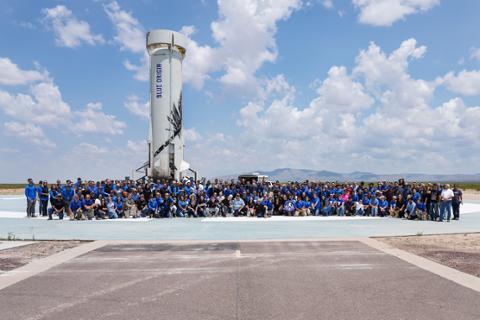The data proves it. The headlines herald it. HR endures it. The Great Resignation of 2021 isn’t receding as quickly as many had hoped. Months into 2022 and companies of all shapes and sizes are still grappling with the realities of record-breaking voluntary resignations.
In December 2021, 4.3 million workers quit their jobs, according to the monthly Job Openings and Labor Turnover Survey (JOLTS) released by the Bureau of Labor Statistics (BLS).
The reason for the mass exodus? MIT Sloan Management Review cited five main reasons (in order of significance): toxic culture, fears of job insecurity and reorganization, burnout, lack of employee recognition and poor response to COVID-19.
Not only are employees leaving their current gigs for a better life at a new company, but many individuals have also left the corporate world entirely to start their own businesses.
Needless to say, the labor market is feeling the pinch. The current state of employee hiring and retention has even been referred to as a “bloodbath.” But in what might be welcome news to some, simply throwing money at the issue has not—and will not—solve anything. Reimaging, reinventing and reinforcing company culture is the key to keeping employees around and remaining competitive in the face of this massive resignation phenomenon. Consider the following ways of creating a winning culture in the age of The Great Resignation:
All Kinds of Kinds
The above-mentioned MIT study, which was conducted early last summer before the Great Resignation made national news, brought to light two main findings that should be very telling to HR professionals, specifically those in tech. First, it revealed that resignation rates are highest among mid-career employees (a.k.a. managers). Second, resignations were seen the most in tech and healthcare. Further insight revealed significant discrepancies in female vs. male resignations and resignations among blacks, whites and Latinx.
Retention strategies ought not to be one-size-fits-all. Considering every company’s demographic is vastly different from the next, the way it engages and cultivates relationships with its employees should not be a carbon copy of their competitors, of large brands, of anyone. In fact, the more tailor-made, the more pride employees can take in their place within the organization.
Personal is Professional
It’s been shown that employees who feel connected personally to at least one person at work are more productive, engaged and stay longer. Peer-to-peer friendships, mentorships, social groups and other people-first initiatives—whether in or out of the office—will go a very long way in improving retention.
Managers should be checking in on their teams on more than just work-related items. They should make a concerted effort to check in on the well-being of employees, especially if a hybrid or fully remote environment is at play. Doing so can improve the relationship between supervisors and team members and make it more likely that an individual will come to his/her manager with issues or concerns before they become a bigger problem.
Make Time for Fun
“So, what do you do for fun?” Everyone’s answer is different. Nevertheless, there is always an answer, and organizations should tune into that. Creating opportunities for everyone to have fun at work is critical in times of high turnover. At the start of the pandemic, upwards of 70 percent of companies were struggling to maintain positive employee morale. As we approach the two-year anniversary of Covid-19, the struggle remains.
Regardless of whether teams are still remote or not, it’s important to have fun at work. Who are the biggest cheerleaders in the office? Who are the most active employees on your intercompany chat? Who would be a champion for morale-boosting activities in the office? Find those people, equip them with the tools they say they need (i.e., budget for a small party, an afternoon of no meetings, a conference room to host a quick in-office happy hour) and take note of the results. At the end of the day, it should come down to what is best for each company’s specific work-life balance needs.
Again, not every industry, job function, office location or age demographic will respond the same to these types of initiatives, so keep it personalized and catered to the needs of individuals and/or teams.
Diversity, Equity & Inclusion (DE&I)
Glassdoor published its annual workplace trends report in January, and predicted that DE&I will be a big theme in 2022: “DE&I efforts now stand at an inflection point as we enter 2022, as employees increasingly expect to see progress from companies and the goodwill engendered by goal-setting or pledges begins to wear thin.”
A previous study by Glassdoor found that more than three-quarters of employees and job seekers believe a diverse workforce is an important factor when evaluating companies and job offers. Companies that ignore the blatant call from employees and job seeking-talent to be more transparent and accountable when it comes to DE&I will risk losing out to competitors. Not only is investing in DE&I efforts a good idea from a social good perspective, but it is a key part of any company’s culture, engagement and retention strategy.
DE&I initiatives are always the most successful when they’re supported at the top – no question about it. When you look at companies large or small that have strong DE&I, it’s always because their leadership makes it a priority and knows how important it is to the bottom line. A company with strong DE&I will embolden unique ideas, foster independence, encourage entrepreneurship, and inspire creativity.
Let’s Talk Benefits
While we know that most employees tend to value strong company culture over higher pay, financial incentives and benefits are not to be ignored at a time such as this. Some traditional ways of recruiting, hiring and retaining employees, such as sign-on bonuses and competitive retirement and health benefits, are proving to be just a starting bid for employees. In the face of the Great Resignation, employers are ramping up both wage increases and non-financial benefits, offering incentives such as fertility benefits, mental health support and caregiver leave policies.
Close That Feedback Loop
A silver lining of the pandemic—from an HR perspective—is that companies have been pushed out of their comfort zone and, in turn, have been forced to think creatively about how they communicate, engage and collect feedback from their employees. The organizations that are collecting feedback, closing that loop, responding with action and adapting to these changing needs of their employees are coming out on top. Companies that implement regular employee feedback have turnover rates that are 14.9 percent lower than for employees who receive no feedback.
Something that contributes greatly to toxic culture—which we know is the number one reason employees are quitting—is lack of action by an employer (i.e., false promises and open feedback loops). A very important study by Catalyst and The Harris Poll reveals that many employees feel their employers do not understand them and that they aren’t providing empathy. This rings especially true for working parents or caregivers that seek an employer that will be more understanding. Employees today are craving flexibility—whether that’s job location, the hours they work or how they work. The study reiterates that employees are leaving if their employer isn’t responding to their needs.
Remaining competitive in a talent shortage and a historically tight job market is no easy feat, but with a people-first mindset that embodies the unique mission and purpose of the organization, it’s possible. Consider the unique space in which the company operates—its industry, its location, its size—and formulate a culture strategy that is genuine and rooted in the needs of the employee. Job seekers can sniff out a toxic culture, and with so many jobs unfilled, it's critical that companies stay focused on upholding strong company values. This will guide businesses through the turbulent waters sure to persist in 2022.
Meg Riat, SPHR, SHRM-SCP, is Director of Human Resources for Leaseweb USA.



